Tokens.net Fee Calculator
Estimated Trading Costs
This tool helps estimate your potential trading fees on Tokens.net based on your trading activity.
Your Estimated Monthly Fees
Maker Fee
$0.00
Typical rate: ~0.15%Taker Fee
$0.00
Typical rate: ~0.25%Credit Card Purchase Fee
$0.00
Typical rate: 3%-4%Total Estimated Monthly Cost
$0.00
Based on 30 days of tradingTokens.net vs Major Exchanges Comparison
| Exchange | Daily Volume | Maker Fee | Taker Fee | Key Features |
|---|---|---|---|---|
| Tokens.net | $2M | ~0.15% | ~0.25% | Fiat gateway, DEX, launchpad, OTC |
| Binance | $12B | 0.10% | 0.10% | Futures, staking, savings, launchpad |
| Coinbase | $3B | 0.00%-0.50% | 0.00%-0.50% | Earn, custodial, advanced Pro UI |
| Kraken | $1B | 0.16% | 0.26% | Futures, margin, staking |
When you start hunting for a crypto exchange that isn’t based in the US, you quickly run into a mix of big names and a handful of regional players. Tokens.net is a European cryptocurrency exchange launched in 2018, operating from the United Kingdom and Slovenia. It markets itself as a transparent, safe, and reliable platform for European traders, but how does it actually perform in the real world? This review walks through the core features, fee landscape, security claims, and the user experience, then puts Tokens.net side‑by‑side with the heavyweight exchanges you probably already know.
Key Takeaways
- Tokens.net offers a hybrid of centralized and decentralized trading tools, plus a launchpad and OTC desk.
- Daily trading volume hovers around US$2million - a fraction of Binance’s billions‑plus.
- Transparency is a selling point, yet detailed fee tables and security audits are hard to find.
- Mobile apps are solid for iOS and Android, but the desktop UI feels conventional, not cutting‑edge.
- Best for European traders who value a single‑jurisdiction platform and don’t need ultra‑low fees.
What Exactly Is Tokens.net?
The platform describes itself as a “trusted European cryptocurrency trading platform built by crypto pioneers.” Its flagship claim is 100% trading‑volume transparency - every order is displayed with the same granularity you’d expect from a professional order‑book feed.
Since its 2018 debut, Tokens.net has expanded from a UK‑focused operation to include a legal presence in Slovenia. The exchange is deliberately shut to U.S. residents, aligning with many European‑only services that avoid the complex U.S. regulator landscape.
Core Features and Trading Tools
Tokens.net bundles a fairly wide set of tools for a platform its size:
- Fiat gateway & credit‑card purchases - Users can fund accounts with traditional bank transfers or buy crypto instantly via credit card.
- Margin & leverage trading - Offers leveraged positions, though exact leverage limits aren’t publicly listed.
- Decentralized exchange (DEX) layer - A built‑in DEX lets you swap assets without leaving the platform.
- Launchpad services - Early‑stage token sales are hosted here, giving tokens.net users first‑look access to new projects.
- OTC desk - Large‑volume traders can arrange over‑the‑counter trades with dedicated support.
- Desktop & mobile apps - Native applications for Windows, macOS, iPhone, and Android provide on‑the‑go access.
While the feature list feels comprehensive, the depth of each tool is less clear. For example, the DEX runs on a simple automated‑market‑maker model, but advanced analytics or custom order types (e.g., iceberg, TWAP) aren’t advertised.
Security Claims and Transparency
Safety is touted as one of three core principles alongside transparency and reliability. Tokens.net says it stores the majority of user funds in cold storage and employs two‑factor authentication, IP whitelisting, and withdrawal whitelists. However, public security audits, insurance coverage, or a detailed compliance report are missing from the website.
The platform’s most concrete transparency metric is its live volume feed. Each trade appears on the order‑book with full size and price data, which is rare for smaller European exchanges that often hide exact volumes.
To put the security picture into context, look at the broader ecosystem:
- Binance publishes annual security audits and operates a Secure Asset Fund for Users (SAFU) that covers certain losses.
- Coinbase is a publicly listed company with regular SOC 2 Type2 reports and FDIC insurance for fiat balances.
- Kraken undergoes third‑party penetration testing and offers a “Proof of Reserves” ledger.
Tokens.net’s lack of comparable documentation doesn’t necessarily mean it’s unsafe, but it gives traders less confidence compared to these industry benchmarks.
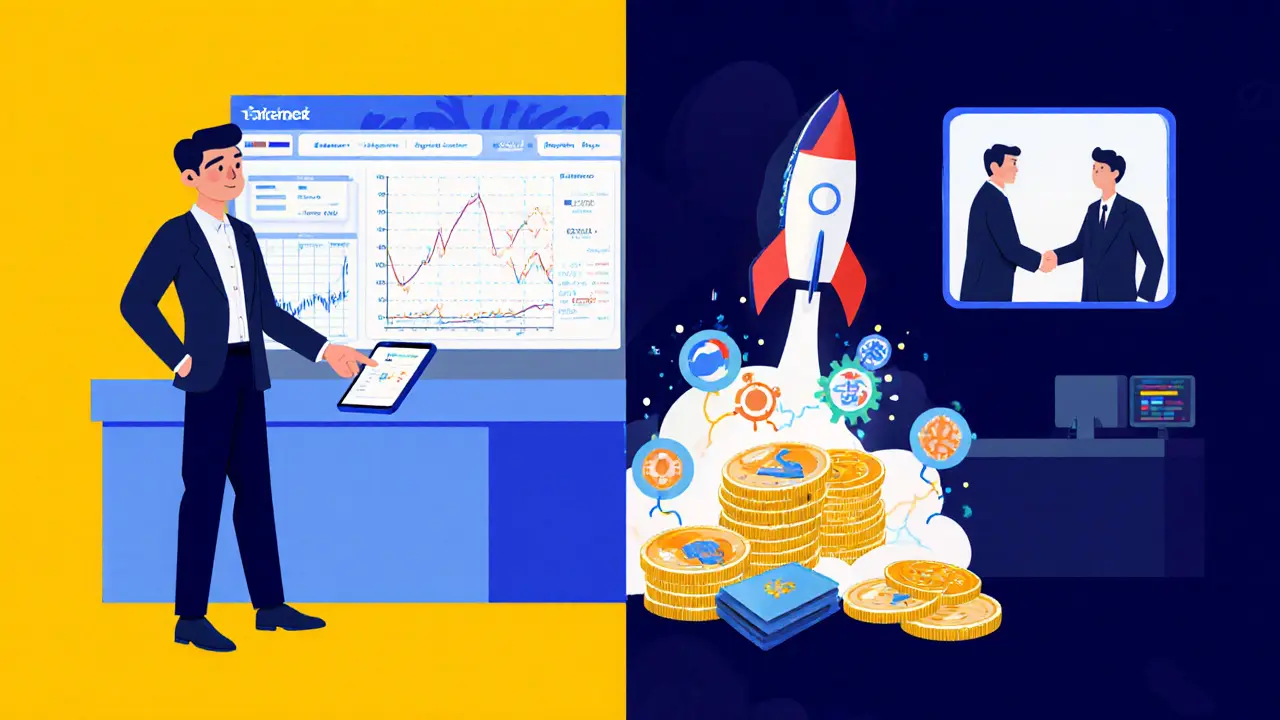
Fees and Costs - The Information Gap
One of the biggest frustrations when researching Tokens.net is the scarcity of fee details. The exchange’s website lists “competitive fees” but does not publish a tiered maker‑taker schedule, withdrawal costs, or credit‑card markup percentages.
Based on user anecdotes from crypto forums (dated 2023‑2024), the following rough figures circulate:
- Maker fee: ~0.15% - slightly lower than the standard 0.20% on many midsize exchanges.
- Taker fee: ~0.25% - aligns with the industry average for low‑volume platforms.
- Credit‑card purchase fee: 3%-4% (typical for card‑based crypto purchases).
- Withdrawal fees: Vary by coin; for Bitcoin ~0.0005BTC, for Ethereum ~0.005ETH.
These numbers should be treated as estimates; without an official fee table you can’t guarantee exact costs until you log in and attempt a trade.
How Tokens.net Stacks Up Against Major Exchanges
| Exchange | Daily Volume (USD) | Year Launched | Primary Jurisdiction | Key Features | Fee Transparency |
|---|---|---|---|---|---|
| Tokens.net | ~2M | 2018 | UK & Slovenia (EU) | Fiat gateway, DEX, launchpad, OTC | Partial (no official schedule) |
| Binance | ~12B | 2017 | Cayman Islands (global) | Futures, staking, savings, launchpad | Full (maker 0.10%, taker 0.10%) |
| Coinbase | ~3B | 2012 | USA (NYDFS) & EU | Earn, custodial, advanced Pro UI | Full (maker 0.00%-0.50%) |
| Kraken | ~1B | 2011 | USA & EU | Futures, margin, staking | Full (maker 0.16%, taker 0.26%) |
The numbers make it clear why Tokens.net is often described as a “niche” player. Its modest volume means tighter spreads can be a challenge, especially for low‑liquidity pairs. Still, the platform’s hybrid DEX offering and launchpad may appeal to traders who want both centralized convenience and decentralized flexibility.
User Experience - Desktop and Mobile
Signing up is straightforward: email verification, KYC (photo ID, proof of address), and optional 2FA. The web dashboard follows a classic order‑book layout - think “price chart on the left, order entry on the right, recent trades at the bottom.” There’s no deep‑sea of custom widgets, which makes it easy for beginners, but power traders may miss features like multi‑chart layouts or built‑in order‑flow heatmaps.
The mobile apps mirror the web UI nicely. On iOS the app feels native, with push notifications for order fills. Android users report occasional lag when loading the DEX screen, but overall stability is solid.
Customer support is reachable via live chat (available 9am-5pm GMT) and a ticket system. Response times average under an hour for chat, but email tickets can take 24‑48hours.
Regulatory Landscape - European Focus
Operating from the UK and Slovenia places Tokens.net under the European Union’s MiCA guidelines (expected full enforcement in 2025) and the UK’s FCA oversight. The exchange does not publicize a specific license number, but it states compliance with “relevant European regulations.”
Because it blocks U.S. IPs, Tokens.net avoids the SEC’s heavy scrutiny on token sales. European traders benefit from the EU’s “travel rule” implementation, meaning the platform must collect and share sender/receiver data for transactions above €10,000.
Pros, Cons, and Verdict
Pros
- Clear volume display - you always know how much is being traded.
- Hybrid model: centralized order book plus built‑in DEX.
- Launchpad access for early‑stage token sales.
- Mobile apps are well‑designed and functional.
- European jurisdiction offers a familiar legal framework for EU residents.
Cons
- Daily volume is low, leading to wider spreads on less‑popular pairs.
- Fee schedule isn’t published; traders must guess or test.
- Security documentation (audits, insurance) is sparse.
- Advanced charting tools are missing compared to pro‑grade platforms.
- Customer support hours are limited to GMT business hours.
Overall, Tokens.net is a solid option if you’re a European trader who values transparency and wants a single platform that offers both centralized and decentralized features. It won’t replace Binance or Coinbase for high‑volume, low‑fee trading, but it fills a niche where trust and a straightforward UI matter more than deep liquidity.
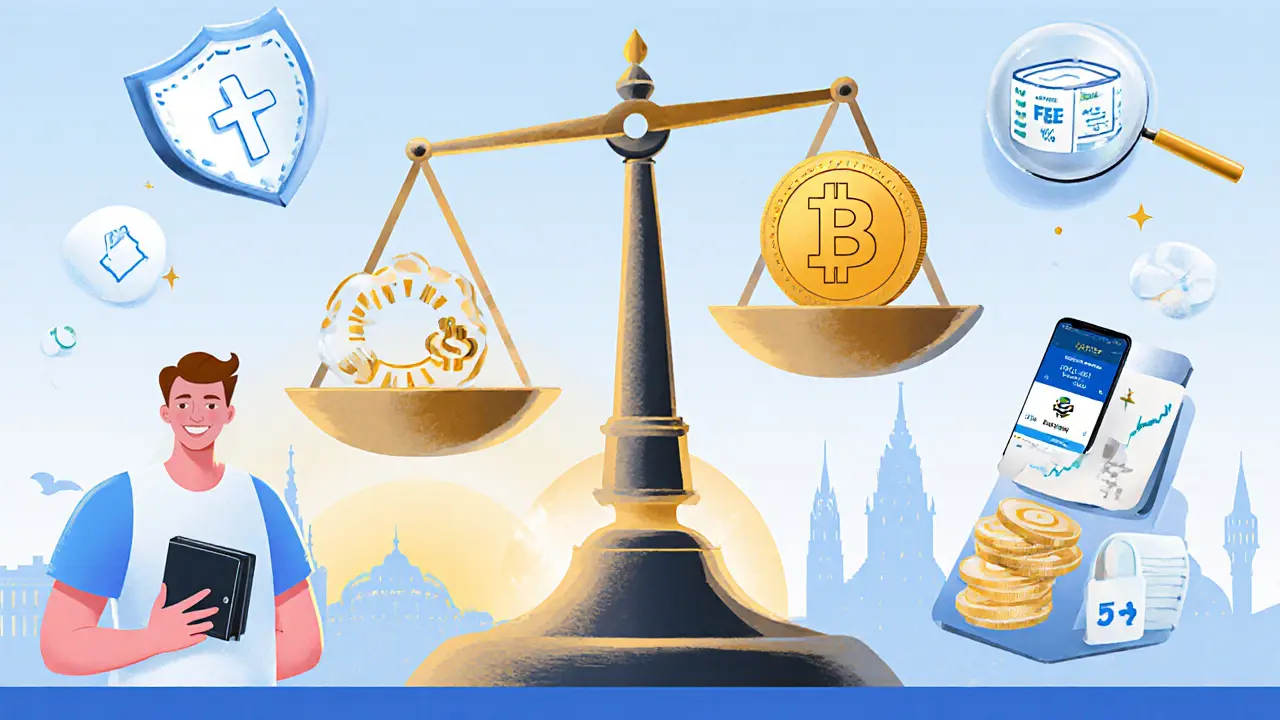
Frequently Asked Questions
Is Tokens.net safe for storing crypto long‑term?
The exchange states that most assets are kept in cold storage and it uses 2FA and withdrawal whitelists. However, without publicly available audit reports or insurance, you should treat Tokens.net like any other non‑custodial service - only keep what you need for trading and consider moving larger balances to a hardware wallet.
How do I buy Bitcoin on Tokens.net?
After completing KYC, go to the “Buy Crypto” tab, select Bitcoin, choose your payment method (bank transfer or credit card), enter the amount, and confirm. Credit‑card purchases incur a higher fee (around 3‑4%).
Can I trade on the built‑in DEX without leaving the platform?
Yes. The DEX tab lets you swap supported tokens using an automated‑market‑maker model. Liquidity is lower than the centralized order book, so expect slightly higher slippage on large swaps.
What fiat currencies does Tokens.net accept?
Primarily EUR and GBP via bank transfer; credit‑card purchases can be made in multiple currencies, but the exact list isn’t published on the site.
Is there a Tokens.net mobile app for Android?
Yes. The Android app is available on the Google Play Store and mirrors the web UI, offering trade execution, portfolio tracking, and push notifications.






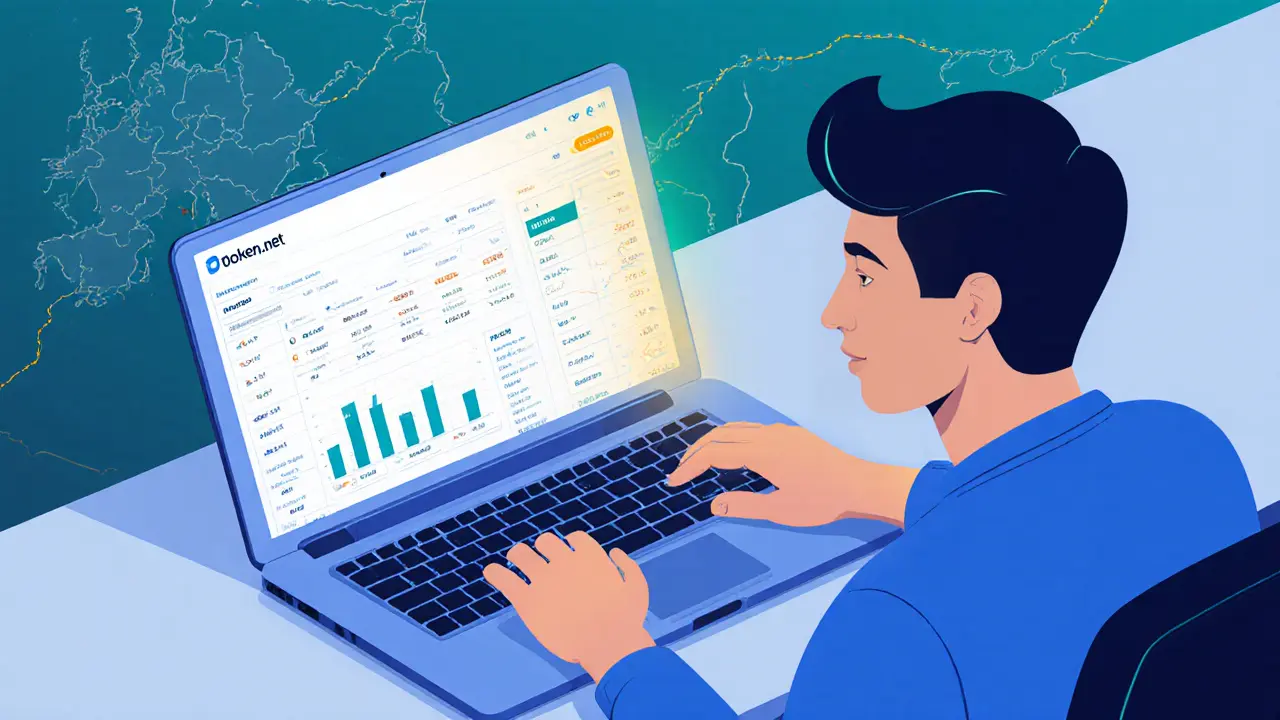
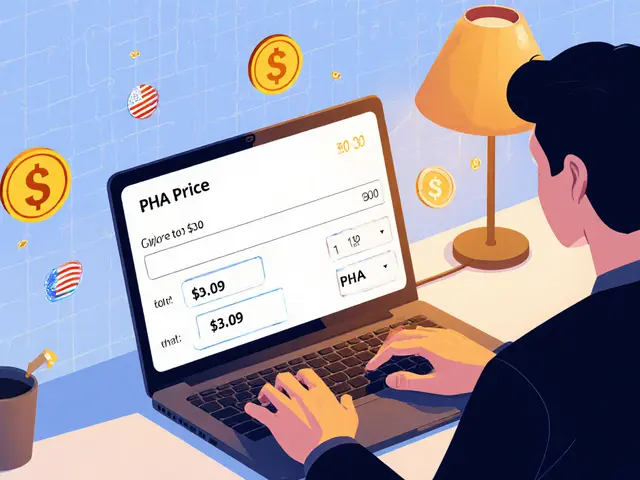

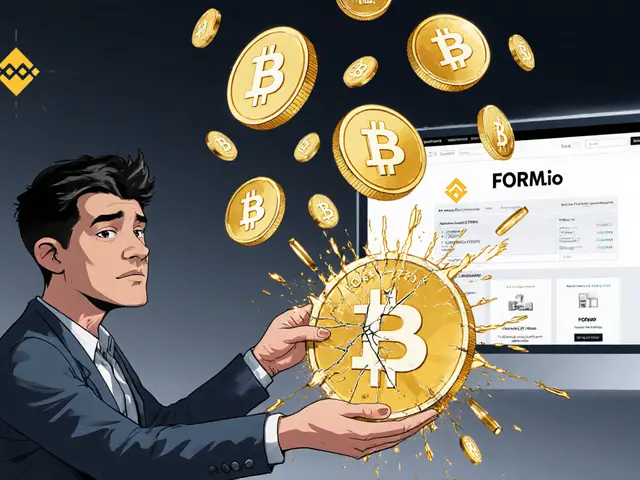
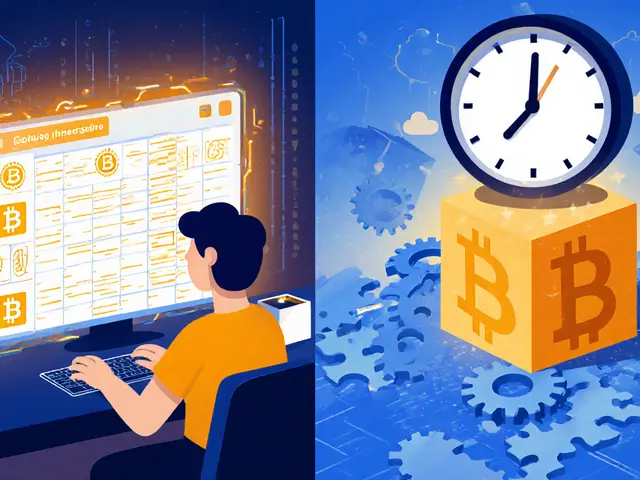
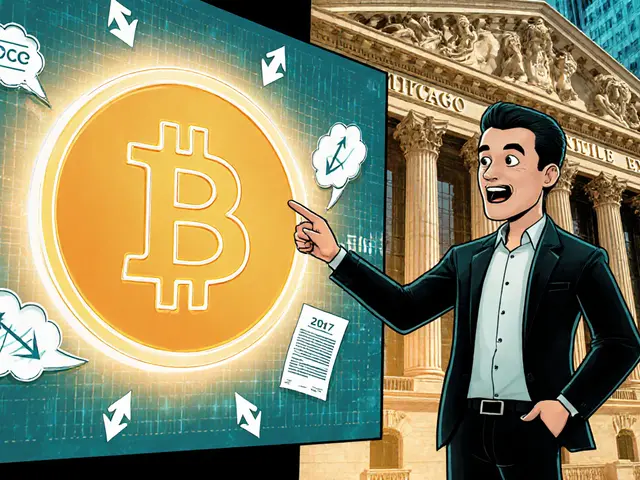
People Comments
If you’re just starting out, stick to the basics and don’t get overwhelmed 🌱.
The fee calculator is a handy way to see how costs add up before you trade.
American traders don’t need to waste time on a tiny European exchange when the big boys have way better liquidity.
From a regulatory compliance perspective, the paucity of publicly disclosed audit reports constitutes a material information asymmetry that may impinge upon the institution’s risk‑adjusted capital adequacy ratios, thereby elevating systemic exposure for counterparties.
Trading is as much a mental discipline as it is a technical exercise 🧘♂️.
Remember that volatility is a teacher, not an enemy, and that every slip can be reframed as a learning opportunity.
When you open the fee calculator on Tokens.net, the first thing you notice is the stark simplicity of the interface, which can be both a blessing and a curse.
The lack of a detailed tiered schedule forces you to rely on anecdotal numbers from forum posts, which vary wildly.
Nevertheless, the estimated maker fee hovers around 0.15%, positioning it slightly above the best‑in‑class exchanges like Binance.
The taker fee of roughly 0.25% is on par with many midsize platforms, but the real pain point is the 3‑4% credit‑card surcharge that can erode small‑scale trades quickly.
Withdrawal fees, while modest for Bitcoin and Ethereum, are not clearly listed for every altcoin, leaving users to guess or test each withdrawal.
Security-wise, the claim of “most assets in cold storage” is standard industry jargon, yet the absence of a third‑party audit leaves a gap in trust.
Two‑factor authentication and IP whitelisting are good, but without a public bug bounty program or SOC reports, the platform’s risk profile remains opaque.
From a user‑experience perspective, the desktop UI feels familiar but dated, lacking the advanced charting tools power traders crave.
The mobile apps, however, are surprisingly smooth, offering real‑time notifications that keep you on top of market moves.
One notable feature is the built‑in DEX, which adds a layer of decentralised swapping without leaving the platform, but liquidity there is thin and slippage can bite on larger orders.
The launchpad gives early‑access enthusiasts a chance at new tokens, yet the vetting process is not transparent, prompting caution.
Regulatory compliance is another gray area; Tokens.net operates under UK and Slovenian jurisdictions, but no specific licence numbers are disclosed.
For European traders, the familiarity of the legal framework can be comforting, but it also means the platform is subject to evolving EU MiCA regulations.
Overall, Tokens.net presents a mixed bag: solid basic tools, decent mobile experience, and a hybrid DEX, but the lack of fee transparency and comprehensive security documentation makes it a secondary choice to the industry giants.
It’s plain to see that a platform limiting itself to Europe can’t compete with the global powerhouses that dominate market share.
Honestly, the UI feels like a throwback to early‑2010s crypto sites – functional but not exactly sleek.
The hybrid DEX vibe adds a splash of rainbow to the otherwise gray world of centralized exchanges!
If you’re after a no‑frills trading desk, this might do, but don’t expect fireworks.
Most folks hype these niche exchanges, but the reality is thin liquidity and hidden fees.
While Tokens.net provides a respectable suite of tools for European traders, the absence of a transparent tiered fee schedule may deter volume‑driven participants seeking predictable cost structures.
I’d rather stick to the big names; these smaller platforms feel like the wild west of crypto.
Pro tip: only keep the amount you plan to trade on the exchange and move the rest to a hardware wallet for saftey.
If you’re into launchpads, Tokens.net’s offering can give you early access to cool projects, but always do your own research!
Consider, dear trader, the philosophical implication of trusting a platform that publishes partial transparency while withholding core fee data; such a paradox may reflect broader market uncertainties.
The security section is woefully inadequate, lacking any verifiable attestations, thus rendering the platform’s safety claims dubious.
It’s commendable that Tokens.net provides a DEX within its ecosystem; nevertheless, the limited liquidity could lead to undesirable slippage for sizable trades.
Great, another exchange with mysterious fees.
Honestly, the whole thing feels like a low‑budget copy of the big players, with all the sparkle missing.
One must question the strategic wisdom of allocating capital to an exchange that lacks comprehensive regulatory disclosures, especially when superior alternatives are readily accessible.
In the grand scheme, picking a platform is like choosing a road – you want the one with clear signs, not hidden potholes.
The superficial claim of ‘transparent trading volume’ is a veneer that masks the deeper opacity surrounding fee structures and custodial practices.
Stay curious, keep testing the platform with small amounts, and you’ll get a realistic feel for its speed and reliability.